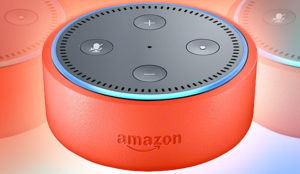
Stanford researchers have created a new game controller that can measure a player’s emotions. Eventually, developers may be able to use this information to adjust the video gameplay experience, depending on a player’s level of engagement.
The prototype consists of an Xbox 360 controller with the back panel removed. Researchers replaced it with a 3-D printed plastic module that is packed with sensors.
Metal plates affixed to the rear of the controller can measure a player’s heart rate, blood flow, respiration rate, and how deeply the player is breathing. Another sensor provides an additional heart rate measurement, while accelerometers track how aggressively the player is shaking the controller.
Custom-built software measures the intensity of a test game — a fast-paced racing game where players need to drive over colored tiles in a certain sequence. Researchers can compare all of the data to determine how mentally engaged players are with the game.
The prototype’s design stems from research at the lab of Gregory Kovacs, an electrical engineering professor, in conjunction with Texas Instruments. Grad students at Kovacs’ lab focus on finding ways to evaluate physiological signals to discover how one’s bodily systems are operating.
Autonomic Nervous System
Corey McCall, the lead on the game controller project, is particularly interested in the autonomic nervous system. This is the emotional part of the brain, which changes when a person is happy or sad, bored or excited. It affects one’s temperature, perspiration, heart rate, respiration level and other body functions. By examining these physical signs, researchers can better understand what is happening in the brain.
McCall discovered that he would be able to monitor gamers’ mental states as they played, and determined that he could collect almost all of the data he needed from a player’s hands. The most common way players operate a game is through a handheld controller.
McCall presented the controller at the Consumer Electronics Show in January and received much positive interest, according to Stanford. The next phase of the project involves using the controller to send information on the player’s engagement level to the console, and then shifting the gameplay experience accordingly.
More Enemies
If a player is looking for the highest levels of excitement and engagement possible from a game, developers may choose to add more enemies to a level when the player showings signs of boredom.
Meanwhile, parents who are worried about their kids getting too involved in a game can be placated by the knowledge that developers could tone down the gameplay or even urge children to take a break.
“Adding more monsters is, of course, the most obvious and immediate way to enhance the game, but what holds great potential is enhanced storytelling,” said Christine Arrington, senior games analyst at IHS Technology.
“There are very few story-heavy video games that engage gamers when compared to the number of action-focused games,” she told TechNewsWorld. “The ability to read the feedback from the gamer and figure out how to make the stories more engaging and interesting would be, I think, a great help to developers so the art of storytelling can be much more highly integrated into the gaming experience.”
It’s not the first time there have been attempts to measure a player’s vitals. In 2009, Nintendo announced the Wii Vitality Sensor, but it was never commercially released.
“If it does work, what are the games that are going to integrate it? That takes custom software,” said Lewis Ward, gaming research director at IDC.
“It’s a very interesting idea. It does seem to be part of a broader trend where you’re pulling in more personal information into a game or a piece of software. I think we’re at the early stages of an interesting way to interface with computer software in a different way in the living room,” he added.
Commercial Hurdles
“The fact that Nintendo never commercialized [the Vitality Sensor] makes me question what it was about it that made it unsuccessful. I would assume the technology coming out of Stanford may face similar hurdles in being commercialized,” Ward told TechNewsWorld.
“The danger is the potential to rely on shock value as a crutch for engagement,” IHS’ Arrington suggested.
“If games used this technology and all they did was try to scare or shock the gamer at every turn, that would a detrimental effect on gaming. Using it for cheap gimmicks wouldn’t really enhance gaming all that much,” she maintained.
“As a side note, there is a potential for this to be extremely valuable for users in serious games,” Arrington pointed out. “I am thinking of PTSD treatment as one example. I suspect integrating patient response data into the experience has the potential to make treatment more effective.”
Multiplayer Issues
Another interesting issue that arises over a player’s physiological readings affecting gameplay is its potential effect on multiplayer gaming.
“If somebody is a calm-blooded person and they’re playing a multiplayer match, does that mean they’re going to throw more bad guys at you?” questioned IDC’s Ward.
“In other words, are you now penalized because you have a low heart rate, whereas a little kid who is very tense and has a high heart rate gets an easier pass in the same multiplayer match? That’s unfair,” he suggested.
“I think you’ve got to be very careful about what it means if this is applied to a multiplayer context, because you may effectively penalize people who are either calm people or good players,” he continued. “Maybe it’s viable, and maybe it makes sense in a single-player context. I’m much less sure this is something advanced players are going to want to see in the games they like.”





















































